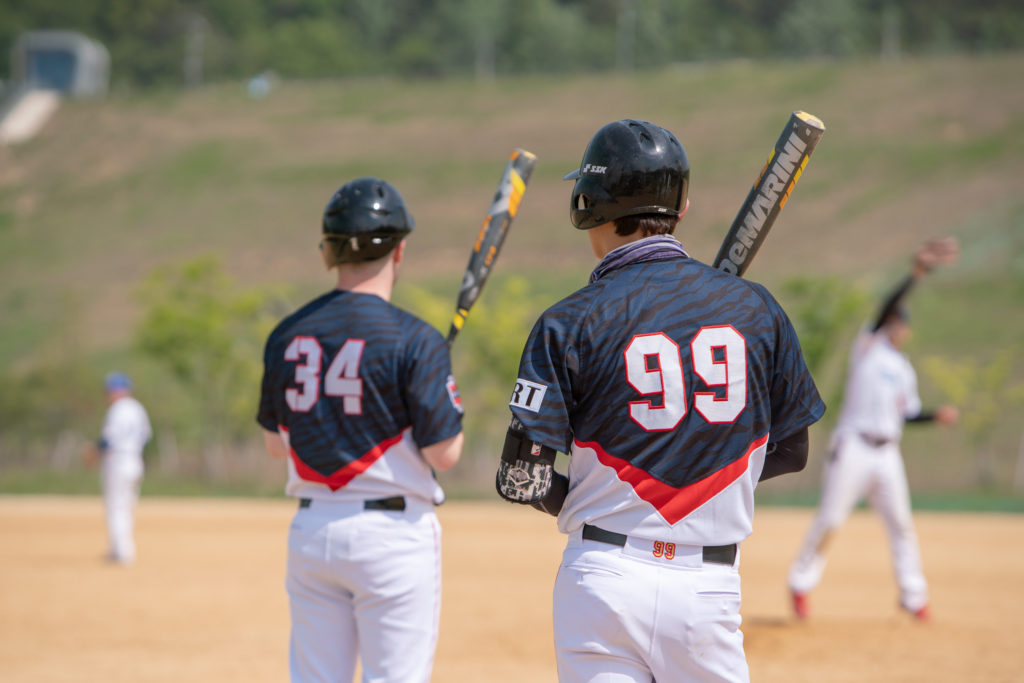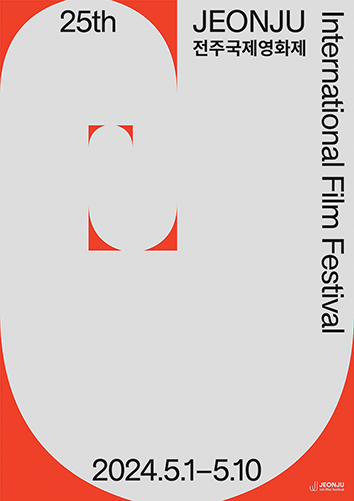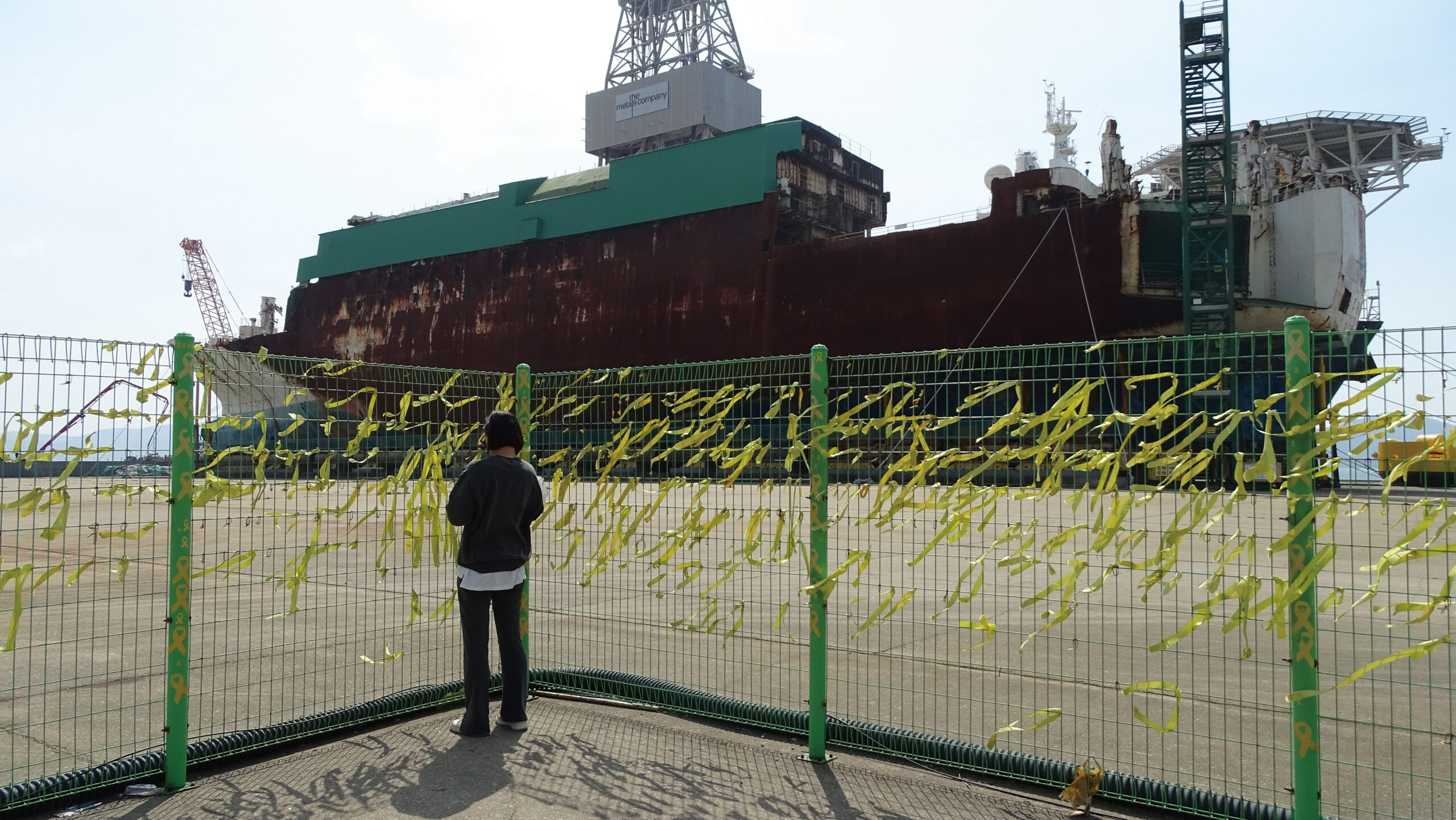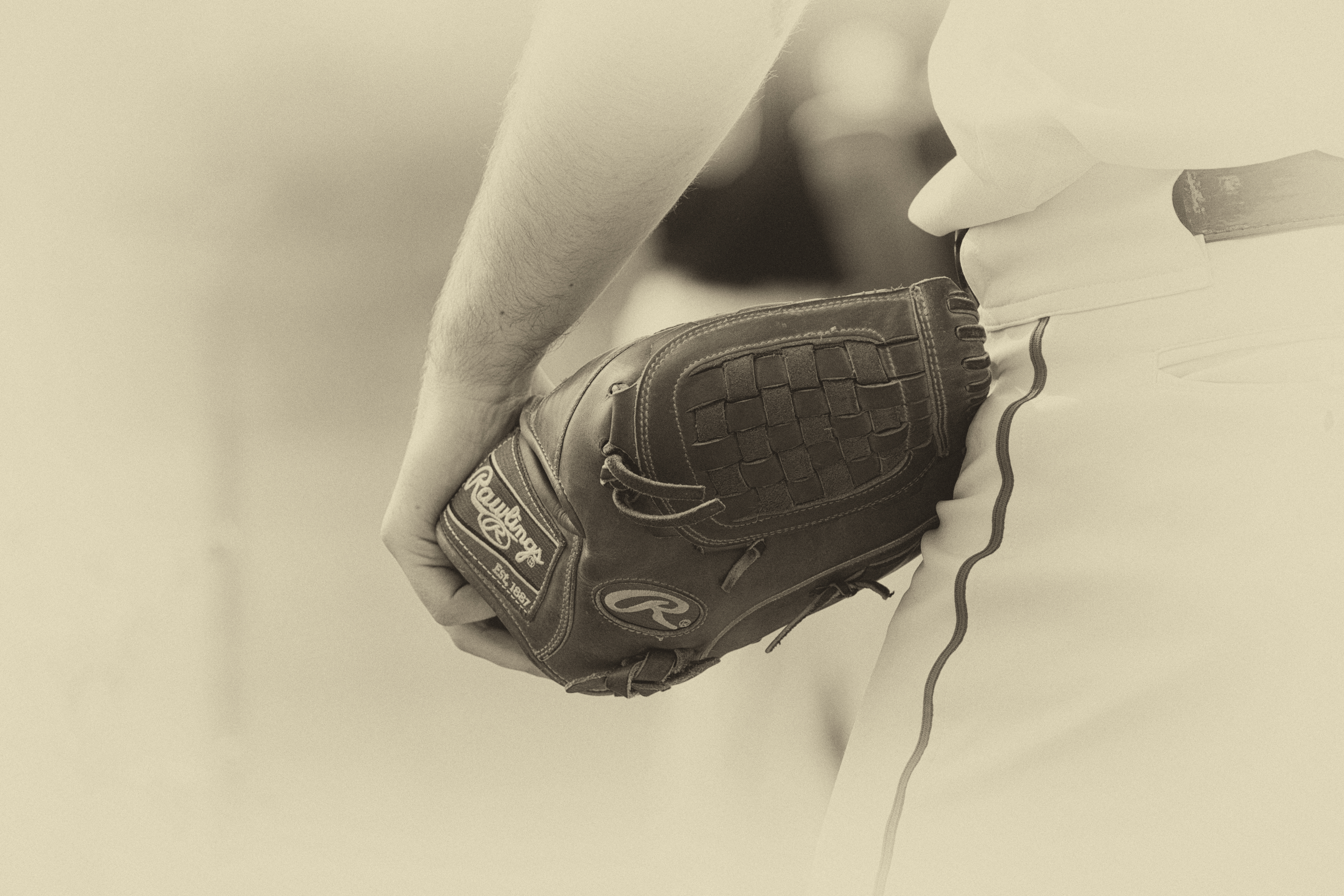The Art of Victory: A Profile of Gwangju’s Art Players Baseball Team
Written by Wilson Melbostad
Photographed by Lee Seon-woo
Can artists play baseball? Can baseball players create art? Can an obnoxiously loud journalist write an interview feature that is enjoyable to read? All of these questions will be answered in turn. Fasten your seatbelts – here comes an interview.
One sunny weekday afternoon, Kim Hae-il shuffles into the Gwangju International Center to conduct his interview and, immediately recognized by the other coordinators and team leaders, starts chatting up nearly everyone in the office simultaneously. Kim is certainly well known amongst the Gwangju art and culture community. Whether it be for his work renovating the live music pubs on Sajik Park Road, managing local a cappella groups, or organizing festivals around Gwangju, Kim can seemingly find a mutual point of connection with almost anyone in this city. Part of this networking ability was the basis upon which Kim, along with a few other artistic leaders, decided to create a baseball team as a platform to create stronger bonds amongst the Gwangju culture and arts communities and unify pro bono efforts to help others around the city. The manifestation of this idea, established in 2012, is known as the Art Players Baseball Team.
Gwangju News (GN): Hi, Mr. Kim, thanks for coming down to chat with me! Can you tell me a little bit about how the Art Players Baseball Team first came together back in 2012?
Kim Hae-il (Kim): Hey, Wilson, thanks for having me. Well, as you mentioned, the team came together six years ago in 2012. The original nucleus of the team essentially came from two local theater groups within the city, the Shinyoung and Olsu traditional performance groups. We already had this pre-existing relationship through performing together, and then after combining our mutual love for the game of baseball, we eventually decided to create a formal team. Word spread out to the other sub-communities of those two performance groups, and soon other actors, dancers, event planners, photographers, and screenwriters (essentially all forms of artists imaginable) came together to form this team. Naturally, due to our common ties as professional artists, we decided to call ourselves the “Art Players.”

GN: That is quite a story! Seeing as much of the work that you guys participate in overlaps (i.e., event planners setting up a concert or performance project), I would imagine your ties outside of baseball must have become much stronger both as professionals and as friends.
Kim: That is right, Wilson. Whatever work I do in the community, our other teammates are interested in it and become consumers of that content. As you mention, the event planners within our team and the performers have definitely collaborated in this way on multiple occasions. Our shortstop may do the lights, our catcher may serve as the photographer, and our pitcher may star as the main actor all in one show. But as you alluded to, it is not just on a professional level that we have gotten closer. Our team also operates as a family. Unlike other teams, our team’s utmost value is our relationship with one another. After a game is finished, we do not go home right away. Instead, we give feedback to one another, not just about baseball but also about what is going on with our work and perhaps any hardships that some of us might be having in our personal lives. This ability to be there for each other is also furthered by the trust that we form while playing together on the baseball diamond.

GN: That is beautiful, Mr. Kim! I understand you have a foreigner on the team. How has that experience been?
Kim: By foreigner, are you referring to yourself, Wilson?
GN: Oh, am I? Ah, yes, I suppose I am the foreigner on the team! I hope the readers do not think my membership as an Art Player precludes me from writing this interview.
Kim: Well, before this interview completely spins out of control, let me just say that we love having Wilson on the team. When Wilson first joined the team in 2013, we were a little worried about aspects like communication, among others. However, as soon as he arrived, he fit perfectly within our team identity. Of course, postgame “liquid courage” also helped us break though some of the barriers in the beginning stages. We threw Wilson a goodbye party in 2014 when he went back to the States to attend law school. We sang, exchanged gifts, and said what we thought was going to be our final farewells. But we are so very happy that he has come back.

GN: Oh, really? What nice sentiments, brother! Final question: I know you have some community-oriented goals for the Art Players, specifically those geared towards younger folks. Can you talk about that a little bit?
Kim: Yes, we definitely want to utilize the power the Art Players have as a baseball community for the benefit of local underprivileged children. These days, because of academics and other factors, Korean children do not have much time to go outside, and their overall physical health is suffering as a consequence. Sports provide good opportunities for kids to learn how to work together with others and problem-solve. But since kids spend so much time on the computer and on their phones, they are missing out on these critical skills. We hope to help sponsor some sort of youth team or baseball camp to help kids in this fashion.
GN: What a fantastic endeavor! I think that would be tremendous for the community. Thanks for your time, Mr. Kim!
Kim: My pleasure, Wilson.
The Author
Wilson Melbostad is an international human rights attorney hailing from San Francisco, California. Wilson has returned to Gwangju to undertake his newest project: the Organization for Migrant Legal Aid (OMLA), which operates out of the Gwangju International Center. He has also taken on the position of managing editor of the Gwangju News.








